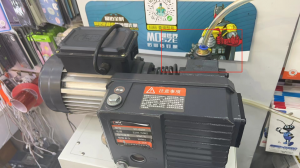The vacuum level that different types and specifications of vacuum pumps can achieve is different. So it is important to choose a vacuum pump that can meet the required vacuum level for the application process. Sometimes there is a situation where the selected vacuum pump could have met the process requirements, but has been unable to do so. Why is this?
Troubleshooting process recommendations of vacuum level not meeting the standard
If you are sure that the vacuum pump and system are compatible, you can refer to the following content for troubleshooting.
- Prioritize leak detection
- Aging and damage of the seal ring;
- Tiny cracks in the weld or threaded connection;
- The vacuum valve is not closed tightly or the valve seat is worn.
- Check the pump oil and filter
Emulsification of the pump oil or clogging of the filter will significantly reduce performance.
- Verify the vacuum gauge reading (to avoid misjudgment).
Case of vacuum level not meeting the standard
The customer did not install an inlet filter and confirmed that the sealing ring is intact, but the vacuum level cannot meet the standard. Then, we asked the customer to take photos of the vacuum pump running, as shown in the picture on the right. Have you noticed the problem? The customer only used a hose to connect the vacuum pump to the chamber, without using a sealed connecting pipe, which caused air leakage at the connection and resulted in the vacuum degree not meeting the standard.

The root cause of substandard vacuum is usually not the pump itself, but system leakage, contamination, design defects or operational problems. Through systematic troubleshooting, the problem can be quickly located and solved. It is worth noting that 80% of vacuum problems are caused by leaks. Therefore, the first thing to check is the integrity of the vacuum pump parts and seals, as well as the tightness of the inlet filter.
Post time: Apr-26-2025






